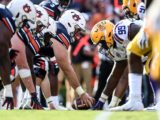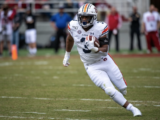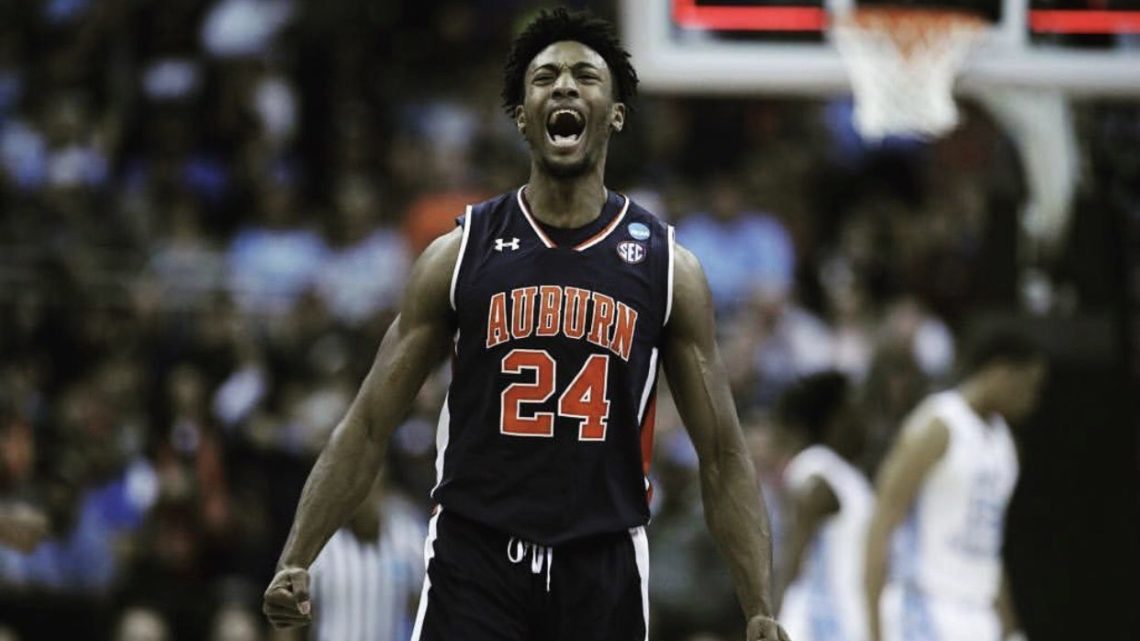
College basketball’s best kept secret: Anfernee McLemore
November 1, 2019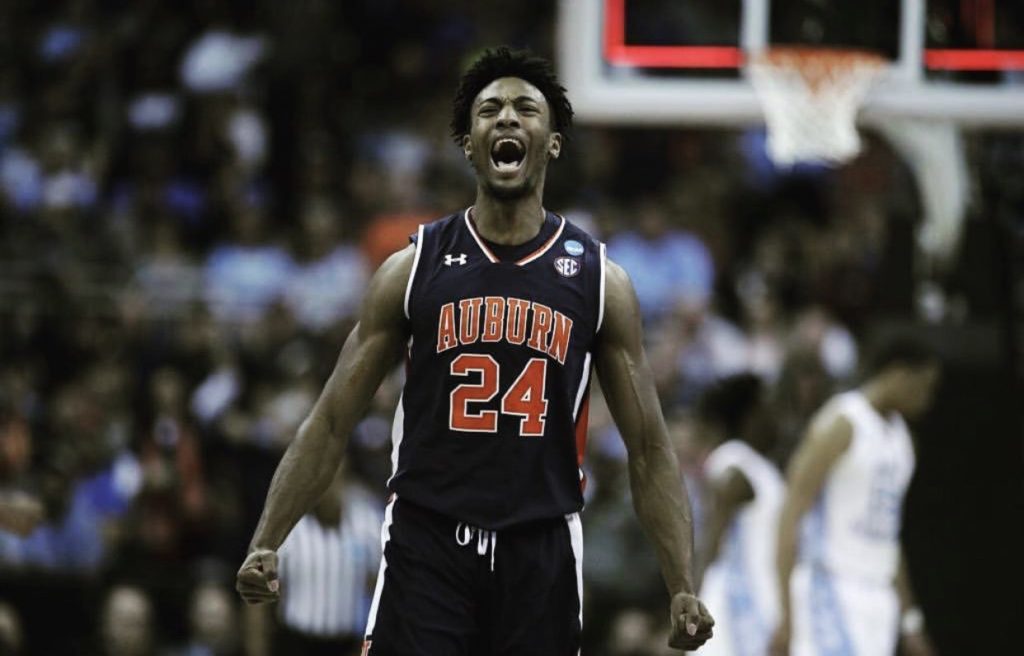
Anfernee McLemore has been one of the most underrated players in the country throughout his Auburn career.
He led the SEC in blocks per game as a six-foot-seven sophomore, ahead of players like Robert Williams and Chris Silva, yet didn’t win a share of the conference’s Defensive Player of the Year award.
Bruce Pearl called him one of the best stretch bigs in the country, and according to the stats he’s right, but McLemore hasn’t appeared on any preseason award watch lists this year.
Despite being underrated, McLemore is still one of the biggest game changers on Auburn’s roster.
While the Warwick, Georgia native’s dunks and blocks might be his flashiest highlights, they only begin to tell the story of how he has helped turn Auburn into one of the hardest teams in the country to plan for and defend against.
The best way to tell the full story is with one of his least-flashy, but most effective, highlights: his three point shot.
I’m probably not the only Auburn fan who cringed a little bit the first time they saw McLemore spotting up for three who has now come to love seeing just that.
A lot of that had to do with how many game-opening, drought-stopping and run-starting threes that McLemore has made.
Take last season for example, McLemore made a three in 21 different games.
In 10 of those 21 games, he was either the first Auburn player to score and, or the first Auburn player to make a three.
McLemore’s ability to shoot a three at anytime, paired with his ability to win every jump ball, gives Auburn an opportunity to start the game off with an easy three points, and potentially a six-point swing by taking away their opponent’s ability to win the tip and make a three.
Not only that, but McLemore isn’t just a big guy that can shoot. His combination of shooting skills and defensive prowess not only make him unique, but they also make him elite.
Flash back to McLemore’s sophomore season again.
Despite getting hurt, McLemore still finished the season with 73 blocks and shot 39-percent from three. That tied him with Chuma Okeke for the highest three point percentage for any Auburn player with more than one attempt per game that season.
Those numbers were just as impressive on the national level.
At the end of the 2017-18 season, McLemore was the only player in all of division one basketball to register more than 70 blocks while shooting better than 35-percent from three that season and not get selected in the top-7 of the NBA draft.
The only other players to average 35-percent or better from three while recording 70 or more blocks were Wendell Carter Jr and Jaren Jackson Jr, two former five star recruits who went seventh and fourth overall in the first round of the 2018 NBA draft.
McLemore’s stats still held their own, despite Auburn’s center playing eight games (200+ minutes) less than Jackson and 10 games (400+ minutes) less than Carter.
If Jackson or Carter had returned for their sophomore, junior or senior seasons, they would have likely been favorable player of the year candidates and would populate every preseason watch list for big men, yet McLemore receives none of that attention.
McLemore has never even made an All-SEC first or second team. He has never won defensive player of the year in the SEC and is somehow still an afterthought for many people talking about Auburn hoops.
McLemore’s ability to shoot and block shots has also has a big impact on Auburn’s ability to win games.
In games where McLemore makes a three pointer, Auburn is 30-5. In games where he doesn’t , Auburn is 41-23.
The stats are similar when it comes to blocks.
Auburn is 38-7 when McLemore has two or more blocks and 33-21 when McLemore has less than two blocks a game.
The impact McLemore can have on both sides of the court, while still having the athleticism to run the court and switch on defense, makes him and Auburn hard to defend, even if he doesn’t always get credit for it.
The Auburn big man might be a secret when it comes to the national media, but he won’t be to the coaches and players that Auburn will face.
Now that McLemore has had two full seasons of shooting well from three, teams will be even more worried about his ability to shoot and could devote even more attention to him.
But that’s exactly what Auburn is looking for.
Sure, opposing teams can bring their big men out, and their big men will have a good chance to stop McLemore from shooting threes, but now Pearl’s team, that is built on speed and athleticism, will have a clear path to the basket, more opportunities from three and less to worry about in terms of a shot blocking center.
Comparing stats from before-and-after a McLemore’s injury say just that.
As a team, Auburn’s field goal percentage dropped from 45-percent before McLemore’s injury to 36-percent afterwards.
The same went for three point shooting, which went from 42-percent in the seven games before his injury to 28-percent in the seven games after his injury.
Everyone from Okeke, to Brown, to Harper shot worse and scored less after McLemore’s injury:



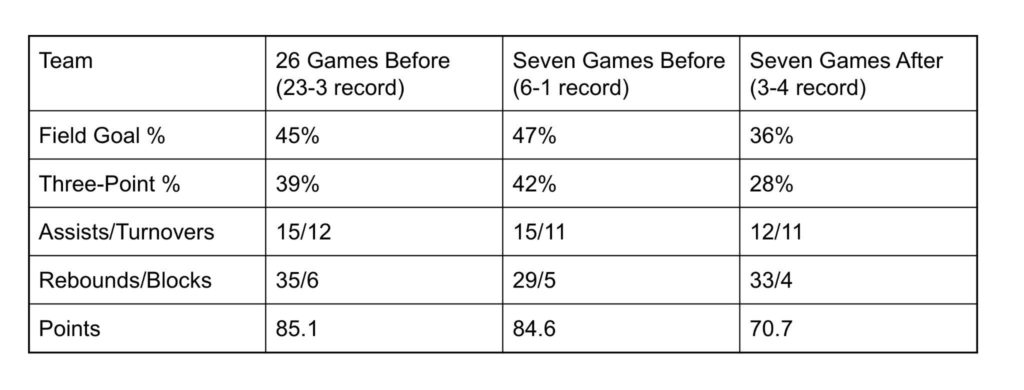
Auburn team stats from the 2017-18 season, before and after McLemore’s injury.
A defense can counter the spacing issues that McLemore creates by playing multiple rim protectors at the same time or by running a zone defense.
Playing against two big men, potentially, makes winning a matchup at power forward much easier for Auburn.
Take Okeke, for example:
Last season, Okeke shot 38.7-percent from three, a great percentage, but that skyrocketed to a 44.4-percent average in games that McLemore shot over 33.3-percent from three.
The numbers that McLemore’s teammates put up before and after his ijnury in 2017-18 say the same thing: McLemore being on the court and playing well takes a lot of pressure off of his teammates.
Auburn’s opponents might have too many flashbacks from last season’s SEC Tournament and Final Four runs to open up this season with zone defenses, but when they come, Auburn will still shoot the ball every opportunity they get.
With the amount of passing skills that Auburn players have (everyone from Danjel Purifoy, to Isaac Okoro, to Jaylin Williams, to Samir Doughty is capable of making good passes) Auburn always has the potential to move the ball around and find openings in opposing defenses.
(Doughty has a career high of 10 assists, Purifoy has a career high of nine assists, McCormick had four games with four assists as a backup last season, and the freshmen class will welcome multiple skilled passers.)
There are ways to counter everything that Auburn does with McLemore, and we could go on all day with examples and scenarios, and sometimes the defense will find methods that work, but when McLemore is shooting well from three, he takes pressure off of his teammates and Auburn is calling the shots.
McLemore added his three point shot, seemingly out of nowhere, to his arsenal between his freshman and sophomore campaigns.
After spending the offseason between his sophomore and junior campaign recovering from an injury, McLemore could have added something else to his game after spending this last offseason healthy.
Due to reports saying that McLemore has been spending time at the power forward position, and Pearl preferring to use a player with point forward type abilities at the four, I think it’s possible that he could be working on adding more offensive-versatility to his game.
No matter what he added to his game or refined this offseason, McLemore has already shown that he can change the game for Auburn.
It’s easy to get in-depth about what makes McLemore a game changer, but it becomes even easier when Auburn’s records with and without McLemore playing are compared.
In 2017-18, Auburn was 23-3 before McLemore’s injury and 3-5 without him.
McLemore was still recovering from his injury when last season started, and he has said that he didn’t feel like his normal self until late in the season.
In the first 30 games of last season, McLemore averaged 6.6 points and 3.8 rebounds per game, shot under 33-percent from three and under 50-percent from the field
Despite being a small sample size, McLemore averaged 7.8 points, 6.5 rebounds, shot 36.4-percent from three, and shot 50-percent from the field for Auburn’s last four games of 2018-19.
Those aren’t the most jaw dropping numbers, outside of his three point percentage, but they show improvement as McLemore began feeling more comfortable. Those four games also came against Kansas, North Carolina, Kentucky and Virginia, some of the best competition Auburn has faced, and Auburn (of course) went 3-1.
Jared Harper, Bryce Brown and Chuma Okeke elevating their levels of play also had a lot to do with the results, but so did McLemore’s rebounding and three point shooting.
McLemore could get recognition he deserves with a big season this year, but the stats make it obvious that his ability to stretch a defense and defend the rim have turned him into one of college basketball’s best kept secrets.
And at the end of the day, when McLemore is making his shots, Auburn is calling the shots.

